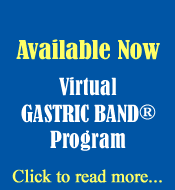![[Michael Schuman, Board Certified Hypnotist in Houston Texas]](images/topbanner.gif)
WHAT IS A STROKE?
How Can Hypnosis Assist Stroke Survivors?
Hypnotist Houston for Stroke Therapy Stroke Treatment
What is it?
A stroke or “brain attack” occurs when a blood clot blocks an artery (a blood vessel that carries blood from the heart to the body). Or a blood vessel ( a tube through which the blood moves through the body) breaks, interrupting blood flow to an area of the brain. When either of these things happens, brain cells begin to die (necrosis) and brain damage occurs.
When brain cells die during a stroke abilities controlled by that area of the brain are lost. These abilities include speech, movement, and memory. How a stroke patient is affected depends on where the stroke occurs in the brain and how much the brain is damaged.
For example, someone who has a small stroke may experience only minor problems such as weakness of an arm or leg. In the case of a larger stroke, paralysis on one side or loss of the ability to speak may occur. Some people recover completely from strokes, but about 60% of strokes will cause some kind of disability.How is it classified?
Cardiovascular disease
1. Ischemic Stroke
Almost 90 percent of strokes are ischemic strokes. They occur when the arteries to the brain are narrowed or blocked, causing severely reduced blood flow (ischemia). Lack of blood flow deprives the brain cells of oxygen and nutrients, and cells may begin to die within minutes. The most common ischemic strokes are:
- Thrombotic stroke. This type of stroke occurs when a blood clot (thrombus) forms in one of the arteries that supply blood to the brain.
- Embolic stroke. An embolic stroke occurs when a blood clot or other debris forms in a blood vessel away from the brain.
2. Hemorrhagic stroke
Hemorrhage is the medical term for bleeding. Hemorrhagic stroke occurs
When a blood vessel in the brain leaks or ruptures.
- Intracerebral hemorrhage. In this type of stroke, a blood vessel in the brain bursts and spills into the surrounding brain tissue, damaging
cells. Brain cells beyond the leak are deprived of blood and are also
damaged.
- Subarachnoid hemorrhage. In this type of stroke, bleeding starts in an artery on or near the surface of the brain and spills into the space
between the surface of the brain and the skull.
3. Transient ischemic attack (TIA)
A transient ischemic attack (TIA) - sometimes called a ministroke - is a
brief episode of symptoms similar to those experienced in a stroke.
15 Categories of Stroke Symptoms
| 1. Paralysis | 9. Self-Esteem |
| 2. Muscle Weakness | 10. Cognition |
| 3. Speech | 11. Risk Prevention |
| 4. Pain | 12. Eating/Swallowing |
| 5. Walking | 13. Personality Changes |
| 6. Vision | 14. Perceptions |
| 7. Memory | 15. Emotions |
| 8. Fatigue |
Current Statistics for Stroke Survival Rate
- 7.6 percent of ischemic strokes and 37.5 percent of hemorrhagic strokes result in death within 30 days.
- While subarachnoid hemorrhage (SAH) represents only about 7 percent of all strokes, it is the most deadly - with more than a 50 percent fatality rate. Of the survivors, approximately half will suffer permanent disability.
- 22 percent of men and 25 percent of women die within a year of their first stroke.
- 14 percent of people who have a stroke or TIA will have another within a year.
- About 25 percent of stroke victims will have another stroke within 5 years.
Women's Stroke Risk Factors
-
Birth control pills enhance likelihood of stroke
-
HRT (Hormone Replacement Therapy)
-
Migraines
-
Pregnancy
-
High fat intake
Some Risk Factors Are the Same for Men And Women
- A family history of stroke
- High blood pressure
- High cholesterol
- Smoking (all tobacco use)
- Diabetes
- Being overweight (obesity)
- Not exercising
How is Hypnosis Used to Assist Stroke Recovery?
A number of the side effects of stroke are issues hypnotists deal with every day: anger, apathy, concentration, compulsion, dignity, memory, plateaus, relationships, self-esteem, and sleep habits.
Hypnosis, with the proper techniques and suggestions, can encourage neuroplasticity - the brain's ability to rewire itself to form new connections to take over a function that was lost to cell destruction. This happens beyond conscious awareness. This does not happen magically or immediately. It requires repetition. That's why multiple sessions are needed for repetition and reinforcing.
Another symptom is chronic pain. This requires a referral from the patient's physician. (Mr. Schuman will be happy to fax the appropriate form to your physician that he can sign and fax back to Mr. Schuman.) Mr. Schuman has a number of National Guild of Hypnotist certifications in Hypnosis Pain Management.
"Rewire the Brain through Hypnosis"Certificate earned by Mr. Schuman:
| N.G.H. Specialty Certifications in: Complementary Medical Hypnotism Hypnosis Pain Management |
![[National Guild of Hypnotists]](images/nghlogo.jpg) |
Use of any content without written permission is strictly prohibited.
Web design by Totem Media, L.C.


